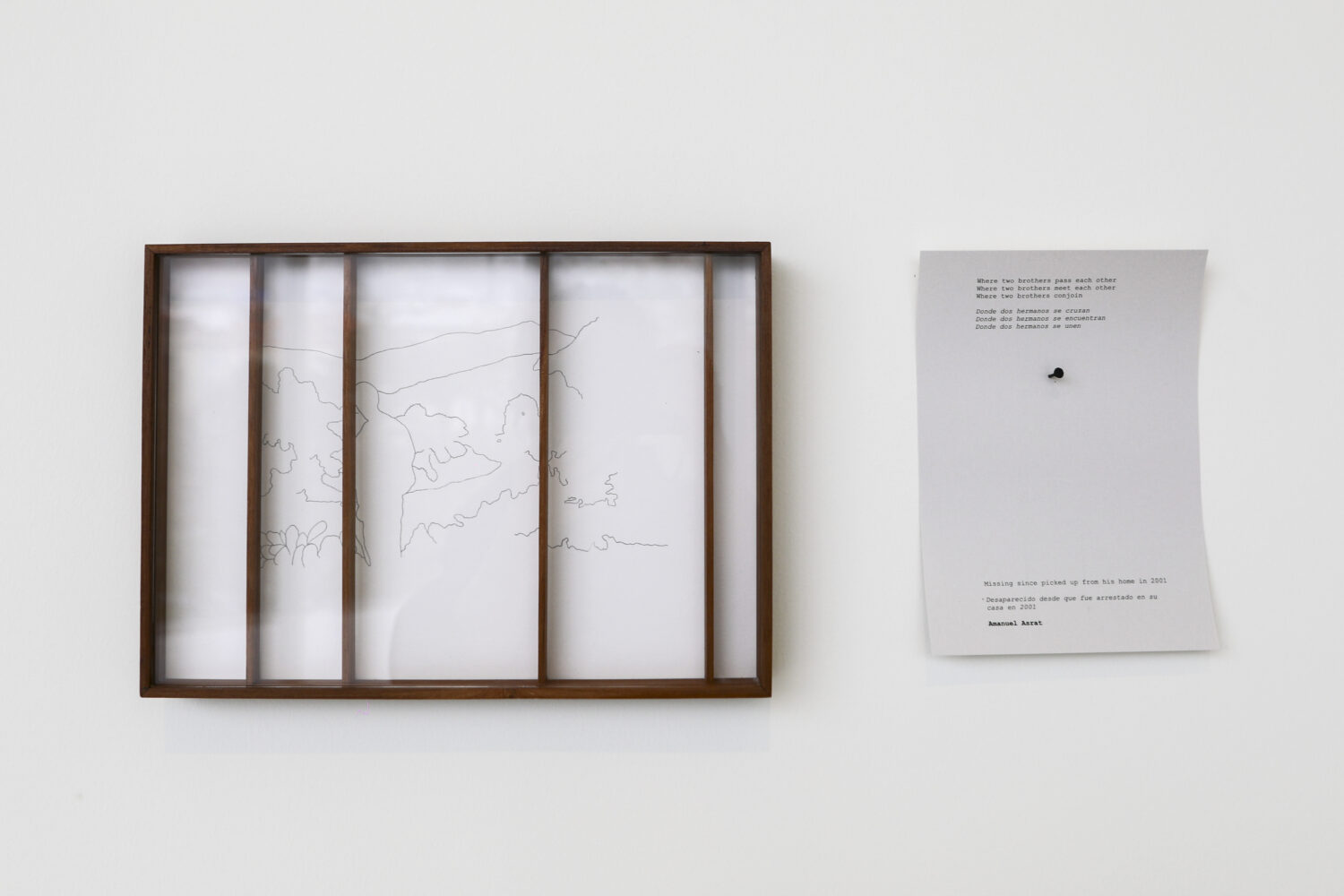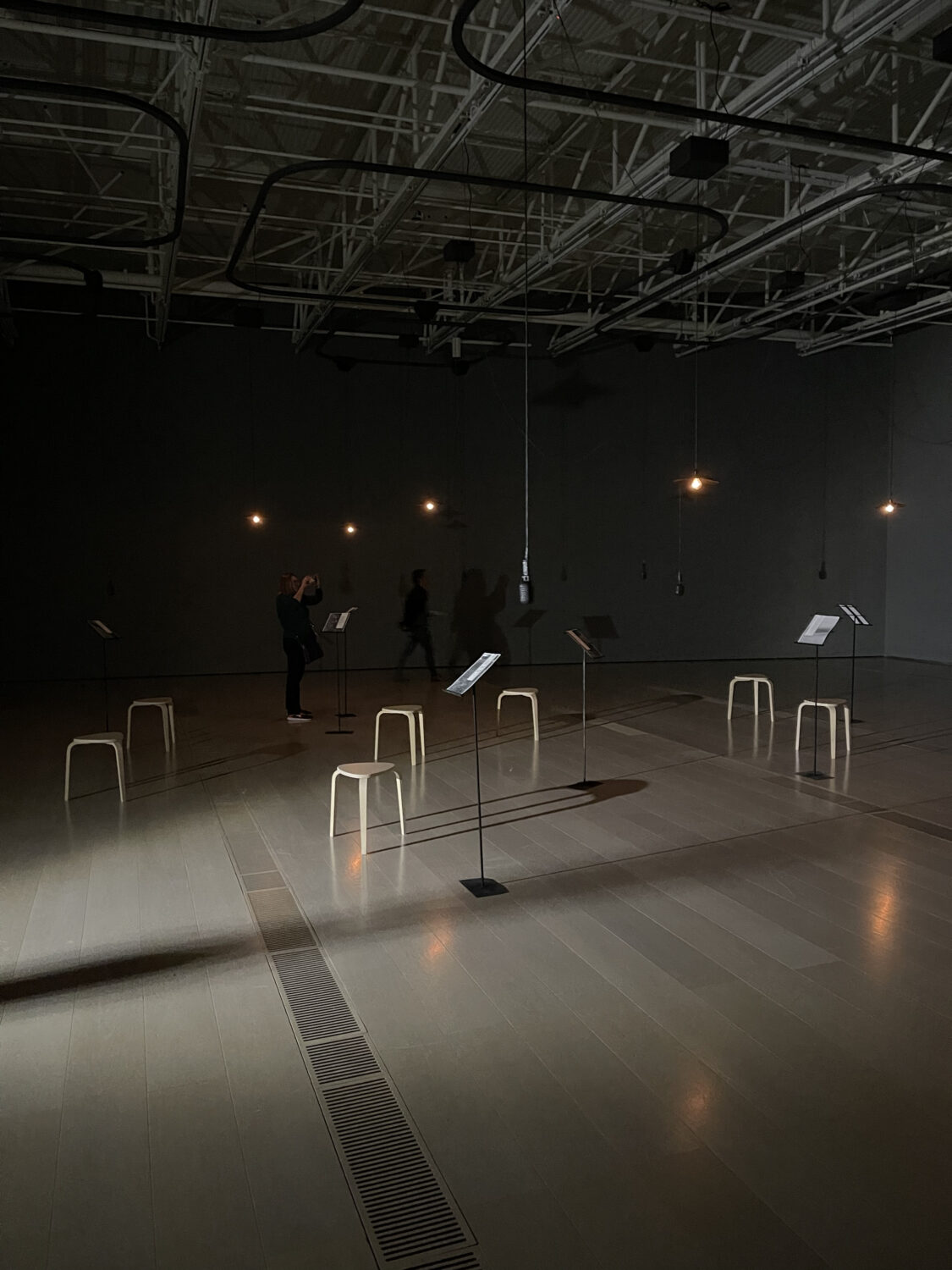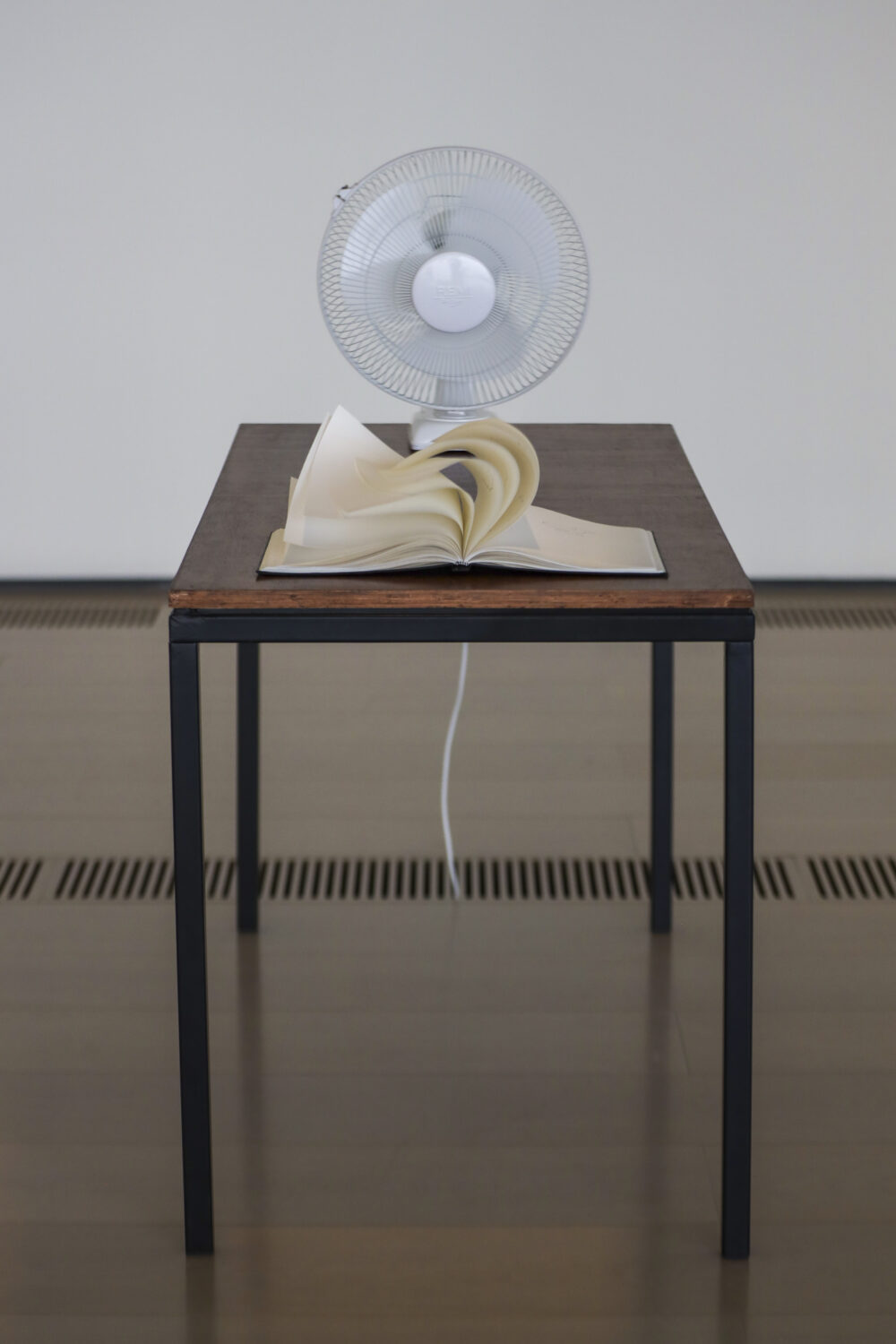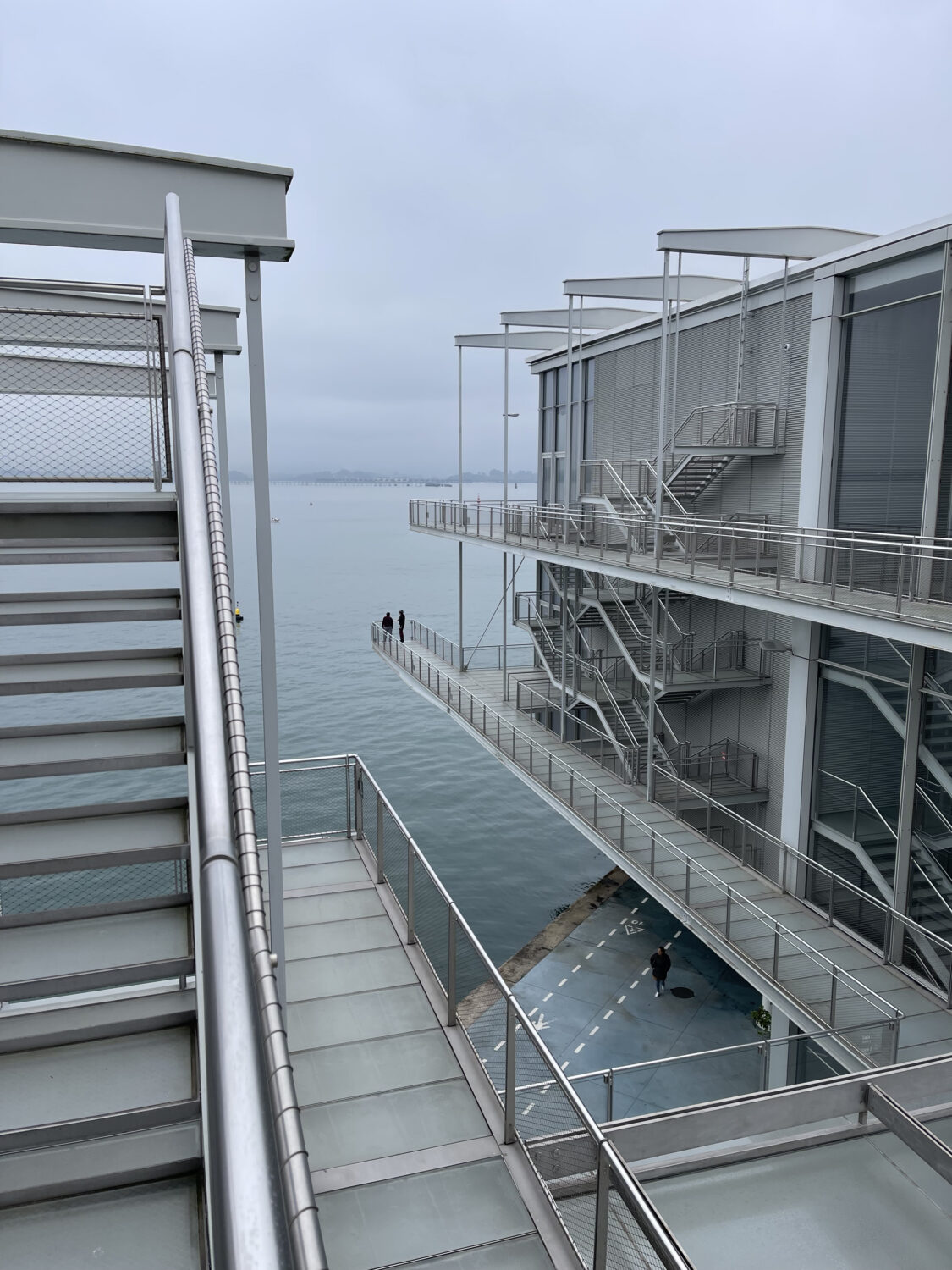At Centro Botín, Shilpa Gupta Gives Voice to Those Silenced Throughout History
By Keshav AnandMumbai-based artist Shilpa Gupta’s latest exhibition takes place at Centro Botín, a Renzo Piano-designed art centre situated on the Cantabrian Coast of northern Spain. Seeking to amplify stifled voices, the show takes its title from the artist’s ongoing work, I live under your sky too. Gupta has long been concerned with the idea of silence, specifically silence brought about by censorship and oppression. Through sound and words, she advocates for resistance, visibility, and empathy.
Upon entering the exhibition space in Santander, visitors are confronted by Untitled, 2018-2024, a series of works on paper. The wall-mounted drawings, enclosed within delicate wooden frames, are accompanied by words from poets hailing from Italy, Russia, Turkey, China, Azerbaijan, Nigeria, India, Pakistan, Myanmar, and Korea who, throughout history, have faced incarceration for their writings. Evidenced in this emotionally charged series, text plays a central role in Gupta’s output.

She tells Something Curated: “I am interested in transmission – in the movement of things, whether that’s the movement of bodies, or the movement of knowledge. We’ve grown up in a system where we are surrounded by text and text has a very present role in defining our experiences, in how knowledge comes to us, how we process what we see and what we know, whether it’s through media – like television and film – or through books. I think that’s why I am so drawn to text…
Going to school in the 1990s, I was first exposed to black and white television, which evolved to VHS and then colour TV, and then the floppy disk came along. In a very short span of time, we saw the world react, experiencing the internet blow through our windows. Going from two or three Doordarshan TV channels to Netflix, it’s impossible to not be impacted by it. And I think that dynamic space of change, experiencing it first hand, has fed my interest.”

Listening Air, a key work in the new exhibition, comprises a set of suspended and moving microphones, emitting diverse and melodious voices of resistance. Spanning folk songs and protest chants to the poetry of Faiz Ahmed Faiz, Gupta seeks to make audible words that have resonated in distant and varied landscapes, connecting rice fields, forests, streets and universities from different times and parts of the world. The artist reflects: “I’ve thought a lot about what is art and who is it for and what it could possibly do… There should be space for all kinds of speaking.”
On realising the ambitious sound work in Santander, Gupta elaborates: “It’s not easy to get such a generous space like this, with the high ceilings. Most ceilings are three or three and a half metres; this is a five metre ceiling and perfectly suited to hang the tracks for the piece. It’s such a great opportunity. Anywhere else, we’d have had to build the whole ceiling and darken the room, but the space naturally allowed for this kind of work to exist.”

Gupta’s practice can be seen as an exercise in negotiating, blurring, and, at times, entirely erasing borders, whether national, ideological or emotional. In the work, 100 Hand Drawn Maps of Spain, 2024, a piece specially commissioned for this exhibition, 100 people from different Spanish cities have sketched the outline of the map of Spain from memory in the pages of a book, illustrating how political borders are constructed and learned. The dramatic variations in the drawings are in equal parts telling and comedic.
Gupta expands: “I started this series back in 2007 with a 100 hundred page book, collecting maps from my family, people who were visiting my studio, from friends and others around me. It’s really grown from there. The first work was 100 hand drawn maps within India, then it went to Montreal, Canada, later Gwangju, South Korea – wherever I get a chance to show, it’s a project I propose or the curator brings into conversation. I’ve made seven or eight now.”

Backdropped by the Bay of Biscay, the exhibition’s namesake work, I live under your sky too – an LED light installation with the show’s title phrase written in English, Spanish and Urdu – was originally conceived in Mumbai. For Gupta, the piece’s presentation in Spain has a certain poetic circularity. “Bárbara [Rodríguez Muñoz], the curator, has been absolutely wonderful to work with. The fact that she chose this big light piece, to bring inside, and then to show it with the backdrop of this water – I mean it came out of my neighbourhood, a migrant city where the sea played such an important role too,” the artist explains.
On her hometown’s rapidly evolving contemporary art landscape, Gupta adds: “If you’re looking for places to visit, it’s really very organised right now partly thanks to the Mumbai Gallery Association who produce an art map for Mumbai Gallery Weekend. If you go to the neighbourhood of Colaba, I would say there are five or six galleries that you should not miss, from Chemould Prescott Road and Experimenter to Project 88. It’s a good mix but we still need more independent spaces and non-profits in the city.”
Shilpa Gupta’s I Live Under Your Sky Too is now open at Centro Botín, Santander and runs until 8 September 2024.
Feature image: Shilpa Gupta, I Live Under Your Sky Too. Courtesy Centro Botín. Photo: Belén de Benito